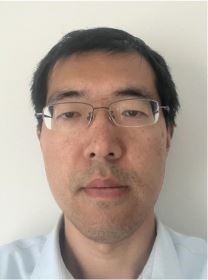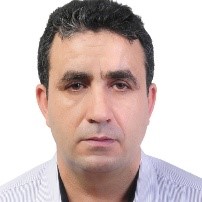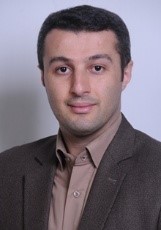
Dr. Shang is from the Department of Computer and Information Sciences at Northumbria University. He is the Head of Subject for Data Science and Artificial Intelligence. He obtained his PhD degree from Shanghai Jiao Tong University in 2010. His research interests include complex networks and systems, statistical physics, and applied mathematics. He is a Section Editor for PLoS Complex Systems and Editor-in-Chief for Research in Mathematics. Title: "Multi-peak and Breathers-type Solitary Wave Solutions in Generalized Higher-order Nonlinear Schrödinger Equation and their Optical Applications" Abstract: In this talk, we will discuss the dynamics of soliton interactions in higher-order nonlinear Schrödinger equations, which are commonly used to model multimode wave propagation in various physical scenarios, including nonlinear optics and shallow water. We constructed new exact solitary solutions in generalized forms of generalized higher-order nonlinear Schrödinger equations by using the extended generalized Riccati equation mapping method through symbolic computation. These wave solutions play a crucial role in engineering and various applied sciences. By assigning appropriate values to certain parameters in these solutions, novel graphical structures are generated, enhancing our understanding of the underlying physical phenomena in this model. These solutions shed light on the complex physical phenomena described by this dynamical model, and our computational approach is demonstrated to be simple, versatile, powerful, and effective.

Professor Rachid Masrour, from Morocco is research professor in the Faculty of Sciences Dhar El Mahraz at Sidi Mohamed Ben Abdellah University, Fez, Morocco. Dr. Rachid Masrour completed his Ph.D. in March 2006 at same University. He has 445 articles published in Scopus and author of 2 books with h-index 44 and editor of 12 Books. He's a Referee of a several articles and also Editorial Board Members in different international journal. He has honored with International Association of Advanced Materials Young Scientist Medal in recognition for their contribution to “Magnetism, Electromagnetism and Spintronics” and delivered a lecture in the Advanced Materials World Congress 11 – 14 October 2022. One of the world's most cited top scientists in material physics (top 2 %, Stanford University Ranking, US, 2020, 2022 and 2023). Title:First-Principles Study of the Structural, Electronic, Optical, Thermoelectric, and Photovoltaic Properties of Inorganic Perovskites
Abstract: Inorganic perovskites have emerged as highly promising materials for a wide range of solar and optoelectronic applications due to their exceptional properties. When investigated using density functional theory (DFT), these materials provide important insights into their structural, electronic, optical, photovoltaic, thermoelectric, and thermodynamic behaviors. DFT calculations offer a comprehensive understanding of their stability, confirmed through formation energy and phonon dispersion analysis, which validate both thermodynamic and dynamic stability. This ensures that the materials are stable under practical conditions. Our study classifies inorganic perovskites as p-type semiconductors with a direct bandgap, an essential feature for efficient optoelectronic devices. Their direct bandgap not only enhances optical absorption but also optimizes performance in solar cells and light-emitting diodes. Furthermore, these materials exhibit outstanding optical properties, including strong absorption in the visible spectrum, which contributes to their excellent photovoltaic performance. Beyond their photovoltaic potential, the thermoelectric properties of these perovskites further elevate their versatility, suggesting their possible use in energy harvesting systems. The remarkable combination of these characteristics positions inorganic perovskites as ideal candidates for next-generation optoelectronic devices, with promising applications in solar energy, thermoelectric devices, and other innovative technologies.

Kaykhosrow Khojier received his Ph.D. in surface and thin films Physics in 2009 from the science and research branch of Islamic Azad University, Iran. Earlier degrees include an M.Sc. in surface and thin films Physics (2004) and a B.Sc. in solid-state Physics (2002). Currently, he is serving as academic teaching and research staff (Associate Professor) at the Chalous Branch of Islamic Azad University. His research has been focused on the growth and characterization of nano-structured materials, nano-sensors, hard coatings, and protective coatings. He has published over 60 articles in several peer-reviewed international journals in the last 18 years. He has also supervised more than 50 M.Sc. and Ph.D. students. Title: Chemiresistive Gas Sensors: Basic Concepts, Evolution, and Perspective. Abstract: With the rapid advancements in different sectors of industry, technology, and medicine, there is a growing demand for sensors that can swiftly and accurately detect various gases and vapors. Chemiresistor gas sensors have emerged as the most widely used type of gas sensor, garnering significant attention due to their affordability, compact size, sensitivity to a wide range of gases and vapors, and user-friendly operation. This lecture will discuss and introduce these types of sensors. In this course, we will first introduce these sensors, their basic concepts, and how they work. We will identify and study the factors affecting their performance. Next, we will discuss their evolution, the research studies conducted to date, and the challenges faced in this field. Finally, we will analyze the outlook for this field.